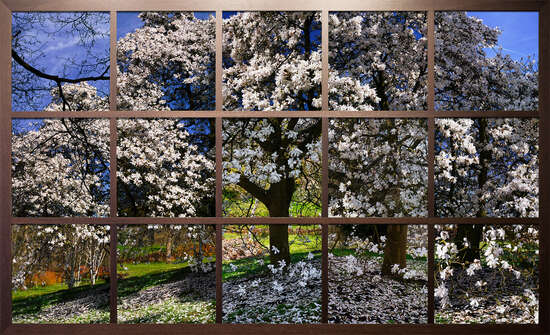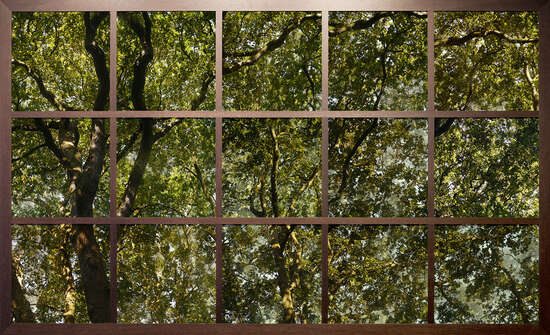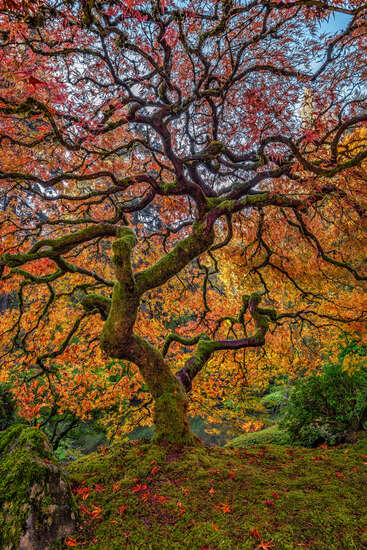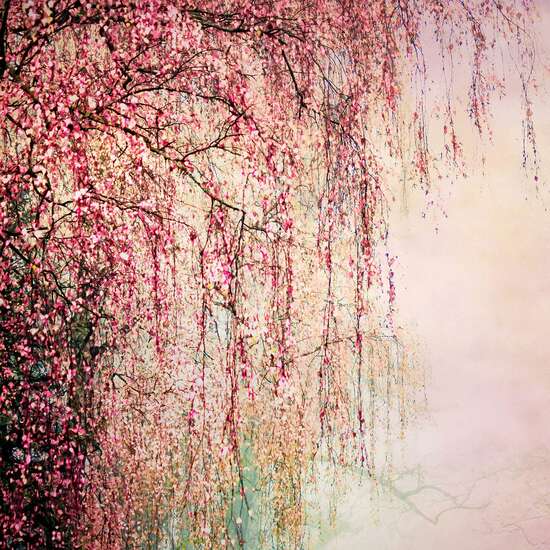READY TO HANG
Out of the box, all LUMAS artworks are ready and easy to hang.
SECURELY PACKAGED
LUMAS works are always packed to the highest standard to make sure it arrives as perfectly as it leaves us.
ARTIST SUPPORTED
Your purchase supports the free and independent work of your favorite artist.
14 DAY RETURNS
Easy 14 day returns to make sure you are satisfied with every purchase.
BACKGROUND INFORMATION
At first glance, Christiane Zschommler’s large-format artworks seem like depictions of reality. If you take a closer look, however, you can see they are made up of many separate pieces. Some branches disappear from one section to the next, and some are slightly offset in where they sprout from the crown of the tree. Zschommler shows us her own unique perspective on nature.
To make sure her tree-filled landscapes are uniform in terms of light and color balance, Zschommler takes all the individual photographs on the same day. She then creates the perfect illusion by playing with perspectives, proportions, and distance from the subject. The artist, who lives in the English countryside, is drawn to the peace and quiet of the woods, noting: “My inner connection to nature flows directly into my work.”
By rearranging the individual elements, Zschommler puts bending boughs and delicate leaves into entirely new contexts, and the results are extraordinarily beautiful. Treescape simulates the natural through self-referential artifice. The unique wood frame was conceived just for this piece and adds geometric structure, giving the artwork a fascinating, sculptural appearance.VITA
Christiane Zschommler grew up in East Berlin and studied photography at the University of Westminster in the 90s. In 2015, she was named the Surrey Artist of the Year and has already published two photo books: Made in Germany (2009) and Hiraeth (2016).INTERVIEW
Picasso once said, "You don't make art, you find it." Where do you find your art?
I live in a small village near London, surrounded by the canal and nature, and I am inspired
during my walks with my camera in the area where I live, influenced by the seasons. I
photograph my surroundings and their transformation, as they are reflected in the water.
From conception to realisation: How do you approach your work?
The works for Lumas are like puzzle pieces; I photograph during a specific season but on the same day to have the same light conditions. For example, I photograph trees in sections in the gardens where I live with a digital camera. Then I create contact sheets, print them out, and cut them, and build grids on the table, far from the computer, ensuring that the resulting landscape works visually. From the paper grids, I then return to the computer to finalise the tree landscapes in InDesign.
Your favourite book?
At the moment, I'm reading a lot of auto-fiction and was very impressed by the books of Jenny Erpenbeck and Tove Ditlevsen.
Which artist would you like to have coffee with and what would you talk about?
I am very impressed by the English artist Cornelia Parker and her installations that play a lot with light and shadow, the choice of materials, and the transformation of everyday objects, and deal with private and public opinions and values of the present.
How did you get into art?
When I was 14 years old, I got my grandfather's Exa camera and started taking photographs. Later, during my travels to Poland and Romania, I switched to Praktica, which was easier to handle, to capture aspects of street life that were usually not shown to us. Friends had a darkroom where I developed the films and made prints.
A little later, my father took care of the estate of my grandfather, the painter Gustav Alfred Müller (1895-1978), and set up a darkroom for me to photograph the works and then archive them as black and white photos.
Until the fall of the Berlin Wall, my improvised black and white darkroom served as a refuge – a magical place, a timeless world. My photographic expression was embodied in the grainy textures of black and white street photography created on my journeys through Eastern Europe.
During my bachelor’s degree in photography at the University of Westminster in London in the mid-90s, my approach to photography changed radically: instead of capturing images, I began to create them. By experimenting with combining images using colour and black and white negatives, I transformed familiar objects into photographs of magical dreams.
For the past few years, my working methods have changed again. In addition to the constructed tree landscapes, I am more involved in conceptual art. I use notebooks, my own photographs, sound, and publicly available data as starting points for reflecting on my experiences within society here in the UK.
Who influences you in your surroundings?
People who are active, who can articulate their ideas and opinions well, and who care about the wellbeing of those who are ignored or overlooked in society, and who do not give up despite setbacks.
Imagine you have a time machine. Where would you go?
I would like to travel to the USA to photograph the oldest trees in California and Nevada, such as the Great Basin Bristlecone Pines, which are almost five millennia old.
Your biggest passion apart from art?
I enjoy going on long walks in nature but I also like to visit European cities with impressive architecture in the spring such as the Guggenheim Museum in Bilbao or the Gaudi buildings in Barcelona with the Sagrada Familia, which I definitely want to visit again when it is completed. I also love going to the cinema, the theatre, and classical concerts.
What are you working on currently?
I have been photographing bare pollarded London Plane trees in the neighbourhood in winter and am currently constructing grids from them.
As for my conceptual work, I am working with historical material linked to education in the GDR from a time I experienced myself as a student and teacher. I want to make objects out of these relics: transforming them through physical interference, and then photographing them in the studio.








